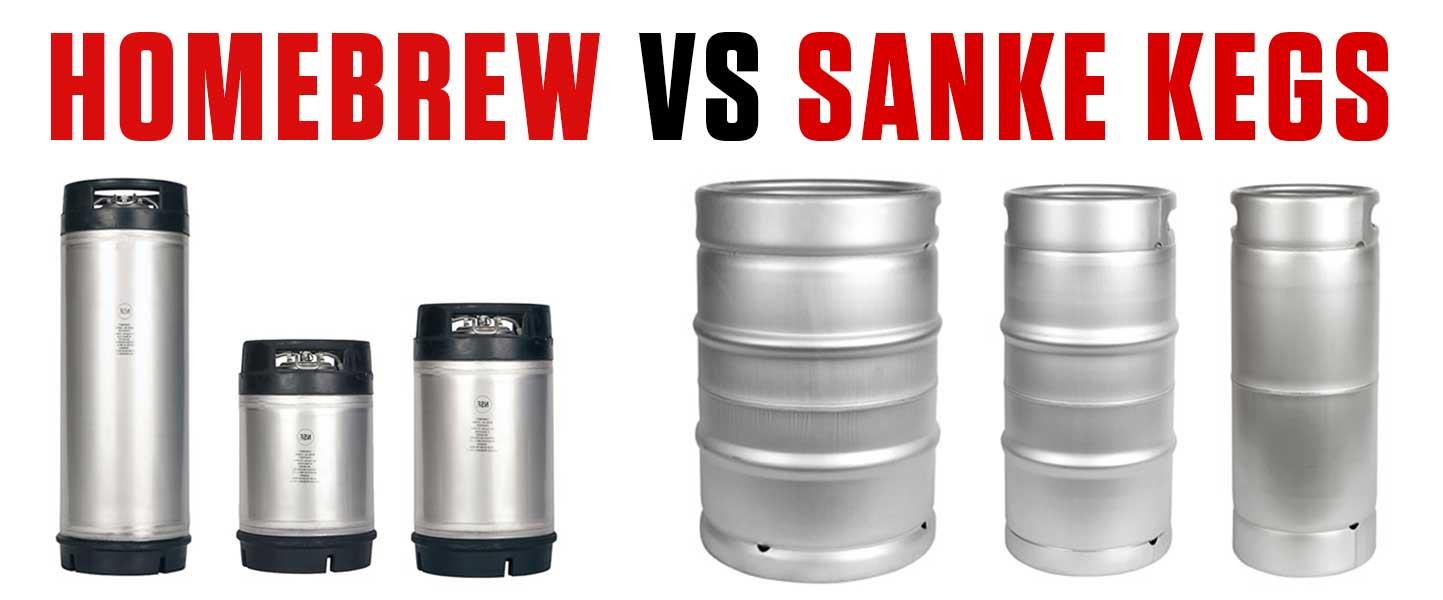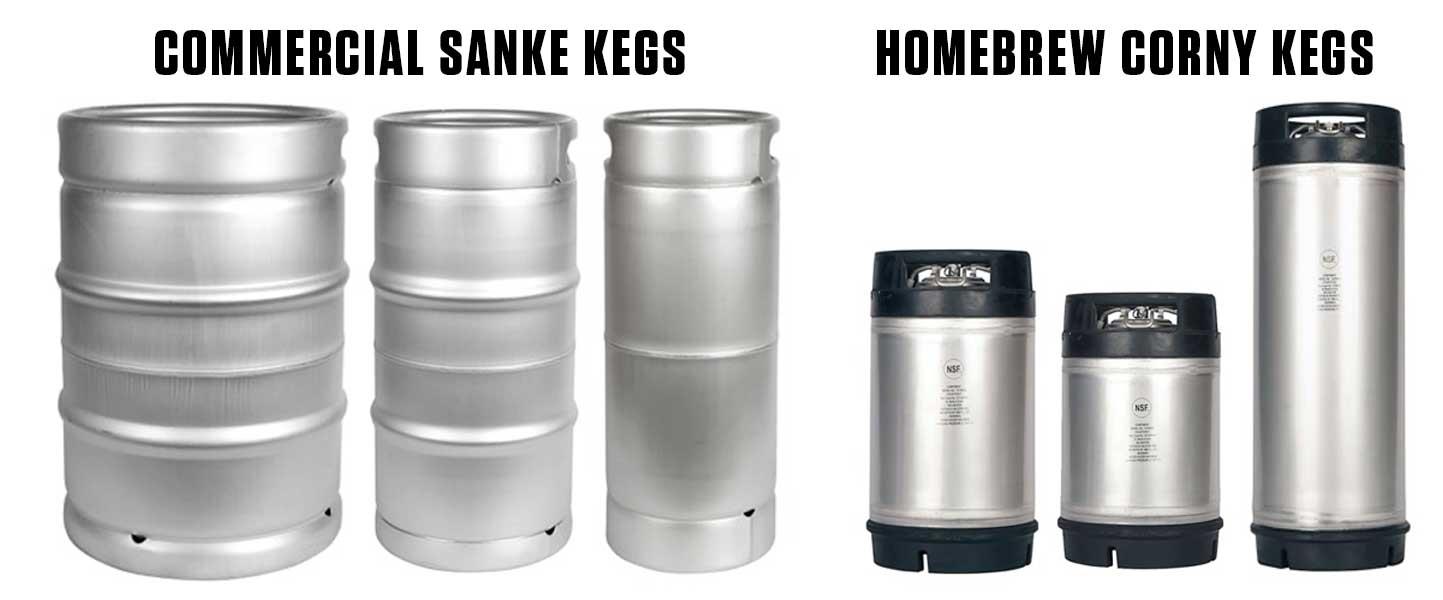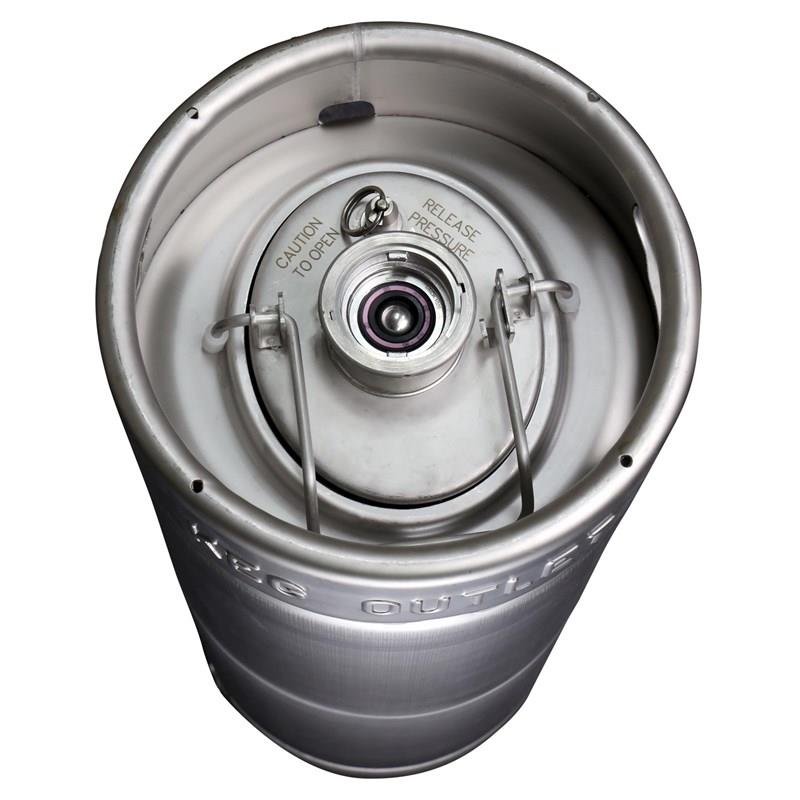
Homebrew kegs and commercial Sanke kegs are two different types of containers used for storing and dispensing beer, wine, coffee, kombucha, etc., and they have several key differences:
Connection Type:
- Homebrew Keg: These kegs typically use ball lock or pin lock connections. These kegs have a couple of ports on top; gas (in), liquid (out), as well as a large removable lid, with a pressure relief valve. These kegs are common in homebrewing because they are easy to disassemble, open up, clean, and fill.
- Sanke Keg: Commercial Sanke kegs, on the other hand, use a different type of connection called a Sanke coupler. Sanke kegs have a single large valve on top, which is compatible with the Sanke coupler used by most commercial breweries. These kegs are standard in the commercial beer industry.

Size and Shape:
- Homebrew Keg: Homebrew ball lock kegs are typically smaller in size, usually ranging from 2.5 to 5 gallons. They are designed to be more manageable for homebrewers and small coffee shops, bars, and restaurants.
- Sanke Keg: Commercial Sanke kegs are larger, with common sizes including 1/2 barrel (15.5 gallons) and 1/6 barrel (5.17 gallons). These kegs are better suited for commercial brewing and distribution.

Availability:
- Homebrew Keg: Homebrew ball lock kegs and pin lock kegs are widely available from used kegs, refurbished and even new ball lock kegs.
- Sanke Keg: Commercial Sanke kegs are typically the property of commercial breweries, but are also readily available to purchase for individuals. When we say that they are generally the property of a brewery, it's because they are usually exchanged or leased between the brewery to the consumer or distributor.
Use Case:
- Homebrew Keg: These kegs are primarily used by homebrewers for small-scale brewing and storage. They are suitable for experimenting with different beer recipes and styles and make it very easy to quickly fill with any beverage you may be working with.
- Sanke Keg: Commercial Sanke kegs are used by breweries for large-scale production, packaging, and distribution of beer, kombucha, coffee, etc.. They are also commonly used in bars and restaurants for dispensing draft beer.
Cleaning and Maintenance:
- Homebrew Keg: Ball lock kegs are designed to be disassembled easily, making cleaning and maintenance relatively straightforward for homebrewers by removing the large lid on top of the keg.
- Sanke Keg: Sanke kegs can be more challenging to clean due to their larger size and the complexity of the Sanke coupler. They often require specialized and pressurized cleaning equipment in order to thoroughly clean the inside of the keg. This equipment can be VERY expensive which is why home brewers and small shops like coffee roasters, generally stick with ball lock corny kegs.
 Hybrid Keg:
Hybrid Keg:
Until very recently this keg was not available. Keg Outlet is happy to be the first to offer this revolutionary Hybrid Keg which utilizes a removable lid, just like the ball lock corny keg lid (but larger), and it has a sanke connection with a manual pressure relief valve on it. This keg is groundbreaking and allows small coffee shops, kombucha brewers and other small-scale beverage manufacturers to fill and clean commercial-style sanke kegs to distribute to bars and restaurants that are only set up to tap Sanke kegs.
In summary, the primary differences between homebrew ball lock kegs and commercial Sanke kegs are the connection type, size, and ease of cleaning. Homebrewers typically use ball lock kegs for small-scale brewing, while commercial breweries and bars rely on Sanke kegs for larger-scale production and dispensing.